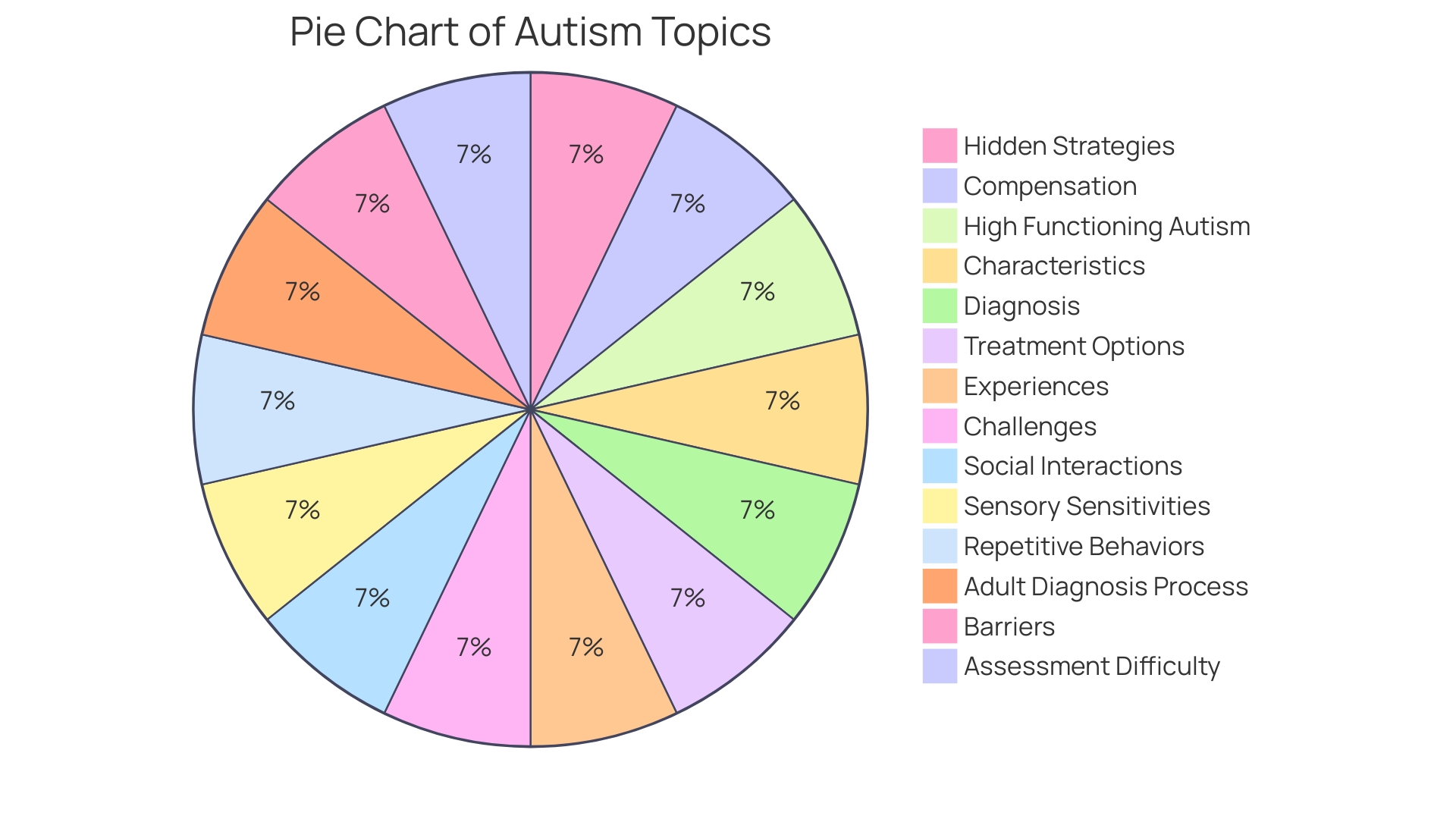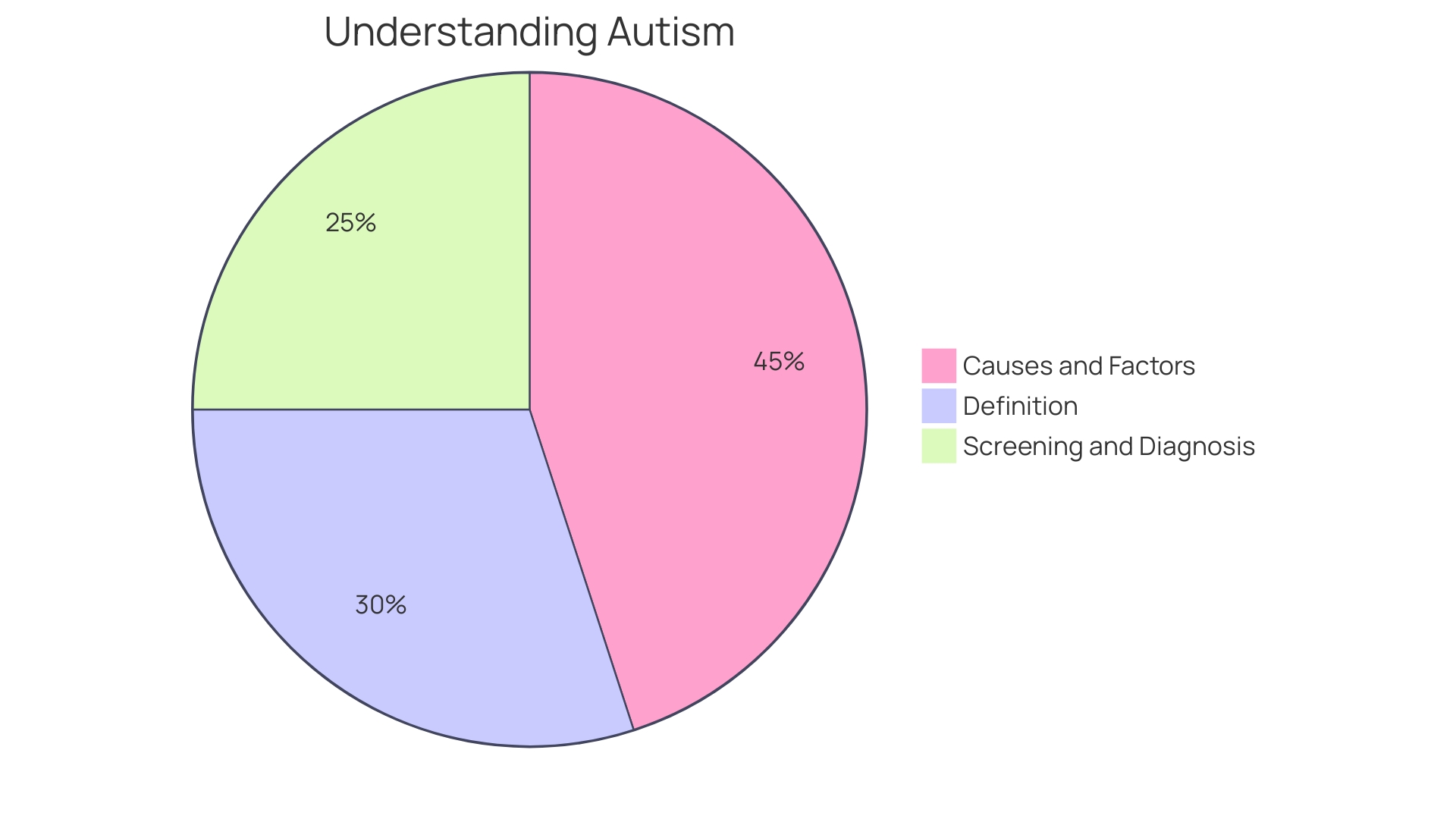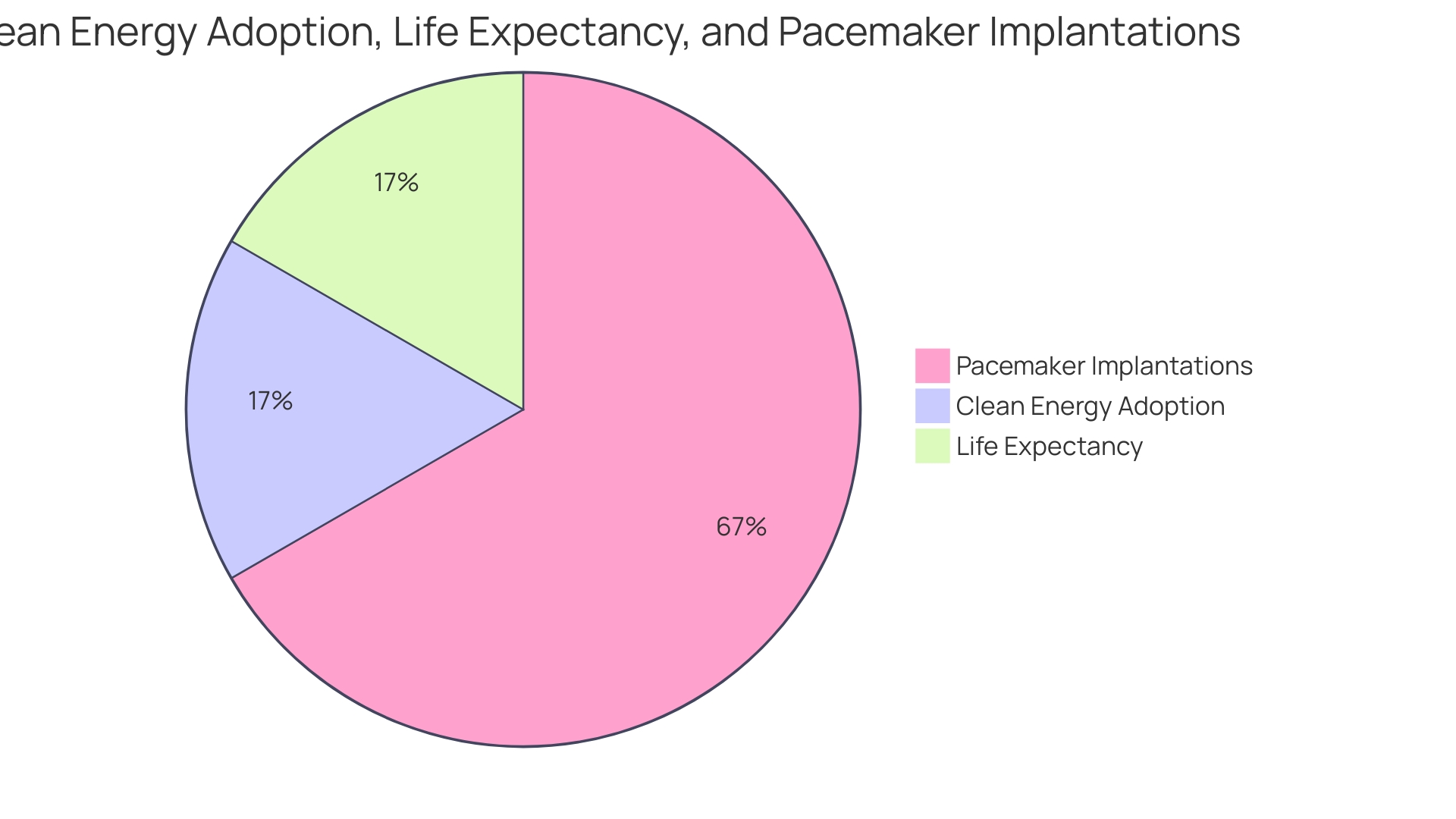Introduction
Autism Spectrum Disorder (ASD) Level 1, also known as high-functioning autism, presents unique challenges in social communication and interaction. Individuals with Level 1 Autism may struggle with social cues and exhibit restricted and repetitive behaviors. However, it's crucial to recognize that every child with Level 1 Autism brings their own strengths to the table and, with the right support, can fully participate in various aspects of life.
Early diagnosis and intervention play a significant role in helping individuals with autism lead independent lives as adults. Additionally, understanding the multifaceted nature of communication, social interaction, and restricted behaviors in Level 1 Autism is essential for creating inclusive and supportive environments. By acknowledging and accommodating the diverse needs and strengths of individuals with autism, we can ensure their well-being and meaningful inclusion in society.
Understanding Level 1 Autism
Autism Spectrum Disorder (ASD) Level 1, often referred to as high-functioning autism, represents individuals at the milder end of the spectrum. These individuals may exhibit challenges with social communication and interaction, alongside restricted and repetitive behaviors. It's essential to recognize that every child with Level 1 Autism brings unique strengths to their communities, and with the right support, they can participate fully in school, home, and leisure activities which are crucial for mental health and equity.
Dr. David (Dan) R. Offord emphasized the importance of a 'fair race' for children, highlighting the need for supportive participation in society for those with disabilities.
Recent research underscores the importance of early diagnosis and intervention for ASD, indicating that only a fraction of individuals diagnosed before the age of 5 can lead independent lives as adults. Moreover, studies reveal that even with higher intellectual abilities, those with high-functioning autism confront considerable social challenges and sensory sensitivities. This understanding is critical as it informs the development of non pharmacological interventions, which are currently being evaluated for their effectiveness and potential impact.
Statistics show that in the UK, approximately 1 in 70 people is autistic, translating to around 1 million individuals. It's noteworthy that only about 30% of working-age autistic individuals are employed, which is significantly lower than the percentage for all disabled and non-disabled people. This emphasizes the need for initiatives that not only raise awareness and reduce stigma but also harness the productivity of autistic employees.
In Australia, the National Disability Insurance Scheme (NDIS) plays a pivotal role in supporting children with autism through personalized early intervention programs focusing on communication, social skills, and behavior management.
The journey towards understanding and supporting autism in society has been one of growing awareness and realization of the value of inclusive and supportive environments. By acknowledging the challenges and strides made in areas like education and employment, there is a continued effort to ensure that individuals with ASD can thrive and contribute meaningfully to their communities.
Characteristics of Level 1 Autism
Level 1 Autism, also known as high-functioning autism, presents unique challenges in social communication and interaction. These individuals often find it difficult to begin or keep up with conversations and may not easily read body language or other nonverbal cues, making it hard to form friendships that are appropriate for their age. Changes in routine or new environments can also pose a problem, requiring a need for predictability and structure.
The support needed is highly individualized, as each person with Level 1 Autism has their own set of skills and areas where they may struggle. Some may develop strategies to "fit in" or compensate for their differences, emphasizing the diversity and adaptability within the autism spectrum. In essence, understanding and supporting someone with Level 1 Autism means acknowledging their unique perspective and providing the right environment for them to thrive.
Communication Skills in Level 1 Autism
For individuals with Level 1 Autism, mastering communication is a key step toward successful social interaction. They may find it challenging to interpret and utilize body language, facial expressions, or the subtleties of tone. Some might experience a delay in learning to speak, while others can have an extensive vocabulary yet struggle with using language in social contexts.
Fortunately, specialized interventions like speech therapy are available to enhance their ability to convey thoughts and needs.
Organizations such as Communication 4 ALL, spearheaded by Elizabeth Bonker, work tirelessly to break down barriers for nonspeaking individuals by advocating for the use of alternative communication methods, such as typing. Their efforts are pivotal in changing perceptions and providing educational opportunities.
Research underscores the complexity of communication for those with autism. Innovative studies by experts like Vikram Jaswal at the University of Virginia utilize engaging methods to understand how nonspeaking autistic individuals process language, revealing their potential for literacy and communication beyond speech.
Moreover, it's crucial to distinguish between speech and language, recognizing that language is not solely reliant on the ability to speak. With the right support and instruction, alternative communication forms can flourish, as evidenced by the progress seen in the deaf community with sign language.
Understanding the multifaceted nature of communication for those with Level 1 Autism not only informs effective interventions but also fosters a more inclusive society where every voice has the chance to be heard.
Social Interaction and Relationships in Level 1 Autism
Navigating social landscapes can be particularly taxing for individuals with Level 1 Autism, who may not intuitively grasp social cues or easily engage in give-and-take conversation. Establishing and nurturing friendships becomes an intricate dance that requires guidance. Yet, it is essential to recognize the strengths they possess and the contributions they can make to their communities.
By leveraging tailored interventions like social skills training, the use of social stories, and providing structured social opportunities, these individuals can indeed flourish socially. Dr. Offord's poignant reflection on equity, "I do not mind if my children are in a race as long as the race is fair", underscores the necessity of creating a supportive environment that fosters the well-being and inclusion of all children, including those with autism.
In Japan, for instance, cultural norms that emphasize conformity can compel autistic individuals to engage in 'social camouflage,' potentially leading to mental health stressors. It's a compelling reminder of the diverse challenges faced by autistic individuals across different cultures and the vital need for culturally sensitive supports. Similarly, an innovative approach using augmented reality (AR) technology to adapt dental environments for those with sensory sensitivities illustrates how understanding and accommodating individual needs can promote better experiences in everyday activities.
Supporting evidence reveals the profound impact of social relationships on mental health, with research indicating a link between social communication difficulties, peer relationships, and depression in autistic adolescents. Furthermore, statistical analysis has shown that mood disorders in autism may present through various expressions, from moral distress to behavioral challenges. This highlights the critical role of evidence-based practices, including interventions designed to address the unique social hurdles faced by autistic individuals.
As we strive to ensure equitable participation in society for those with autism, it is crucial to consider the full spectrum of their experiences, from brain-based factors and hormonal influences to societal pressures and individual differences. By acknowledging and supporting the diverse needs and strengths of individuals with autism, we can pave the way toward a more inclusive and fair race for everyone.

Restricted and Repetitive Behaviors in Level 1 Autism
Individuals with Level 1 Autism Spectrum Disorder (ASD) often exhibit restricted and repetitive behaviors (RRBs), which can be a significant part of their lives. These may include repetitive body movements such as hand-flapping or rocking, intense interests or preoccupations with specific topics, an insistence on following strict routines or rituals, and heightened sensory sensitivities to textures, sounds, or lights. Recognizing and managing these behaviors is crucial for the well-being of those with Level 1 Autism.
RRBs are not merely quirks; they serve a purpose for autistic individuals, often helping to alleviate anxiety or navigate overwhelming sensory environments. For example, factor analyses of the Autism Diagnostic Interview-Revised (ADI-R) reveal two distinct subtypes of RRBs: 'repetitive motor behaviors' and 'insistence on sameness' behaviors. These behaviors may be driven by anxiety, and engaging in RRBs can potentially calm the nervous system, thus serving as a coping mechanism.
Therapeutic interventions like occupational therapy, behavioral interventions, and sensory integration therapy are tailored to support individuals with ASD in managing these behaviors. Such interventions are informed by the latest research, including randomized-controlled trials, to ensure their effectiveness. It is essential to understand the multifaceted nature of RRBs and the individual needs of each person to provide the most beneficial support.
Moreover, it's important to consider the broader context of an individual's health when addressing RRBs. Autistic children are reported to experience gastrointestinal issues at a rate four times higher than their neurotypical peers. These medical factors, such as constipation, acid reflux, and food allergies, can exacerbate stress and, consequently, RRBs.
The MOBSE framework developed by Dr. Smile's team at Holland Bloorview emphasizes the significance of nutritional and medical stability in managing ASD.
To optimize the support for those with Level 1 Autism, it is crucial to utilize data-driven approaches. The Center for Discovery employs artificial intelligence and machine learning to analyze extensive data sets, which can predict significant behaviors and help mitigate their impact. Such proactive strategies are transformative, allowing for interventions that are more personal and effective.

Diagnosis and Assessment of Level 1 Autism
Identifying Level 1 Autism Spectrum Disorder (ASD) requires a multifaceted approach where developmental pediatricians, psychologists, and other specialists collaborate to assess a child's social communication, behavior, and sensory processing. This process is informed by parents' and caregivers' insights into the child's development and direct observation of the child's behavior. The American Psychiatric Association outlines criteria in the DSM-5 to aid in this assessment.
Utilizing diverse diagnostic tools, professionals aim to understand a child's unique profile, which is essential for formulating personalized support strategies. Early intervention is imperative for enhancing outcomes, with current research underscoring the benefits of starting behavioral therapies as soon as possible. Yet, statistics reveal that despite early parental concerns, the median age of diagnosis in the U.S. is between 4 to 5 years.
Early diagnosis is critical, as approximately 1 in 36 U.S. children are affected by autism, and access to early behavioral therapies can significantly improve language, cognitive, and social abilities.

Support and Accommodations for Individuals with Level 1 Autism
To optimize the environment for individuals with Level 1 Autism, it's crucial to introduce structured settings and predictable routines, which cater to their preferences for consistency. Visual aids, such as clearly displayed schedules and social stories, enhance understanding and provide stability. The educational Treatment and Education of Autistic and Related Communication-Handicapped Children (TEACCH) approach exemplifies this principle, leveraging visual learning and structured teaching methods to foster academic success and overall well-being.
In addition to environmental adjustments, personalized educational plans like Individualized Education Plans (IEPs) and Behavior Intervention Plans (BIPs) are indispensable. These plans are tailored to address each individual's unique academic, social, and behavioral requirements, paving the way for a well-rounded support system. As Associate Professor Hala Annabi points out, the goal extends beyond initial inclusion; it's about nurturing growth and career advancement, which is particularly vital for neurodivergent individuals who may find self-advocacy and career progression more challenging.
Collaboration with educators, therapists, and various professionals ensures that the support is not only multifaceted but also evolves with the individual's journey. Such collaborative efforts are mirrored in initiatives like Emirates and Dubai International Airport's program, which creates rehearsal flying experiences for neurodivergent passengers, including autistic individuals. This hands-on approach exemplifies the importance of adapting environments to suit neurodiverse needs, ultimately facilitating a more inclusive and supportive society.
In the realm of higher education, it is noted that a significant yet unspecified number of students in the UK higher education system are autistic, thus necessitating enhanced support structures tailored to their unique challenges. While autistic traits can be advantageous in academic pursuits, such as attention to detail and strong memory, the social and sensory aspects of university life may present significant hurdles. By recognizing the strengths and addressing the challenges faced by autistic individuals, we can create a more equitable and inclusive educational landscape, as echoed by the insights of child psychiatrist Dr. David (Dan) R. Offord, who emphasized the importance of ensuring fair participation for all children, including those with disabilities.
Conclusion
Understanding Level 1 Autism is crucial for creating inclusive and supportive environments. Early diagnosis and intervention play a significant role in helping individuals with autism lead independent lives. Communication skills and tailored interventions can enhance social interaction for individuals with Level 1 Autism.
Recognizing and managing restricted and repetitive behaviors is crucial for their well-being. Collaborative approaches to diagnosis and personalized support plans are essential. By adapting environments and providing the necessary support, we can create a more inclusive and supportive society for individuals with autism.
Together, we can ensure their well-being and meaningful inclusion in society, paving the way for a more equitable and empowering future.




